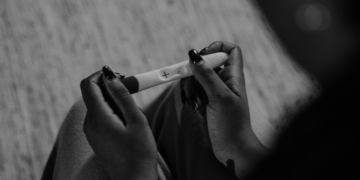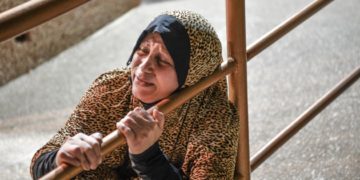This post is also available in: Français (French) العربية (Arabic)
By Övgü Pınar
The country with the highest number of legal harassment cases against women journalists is Turkey, according to a report by “The Coalition for Women in Journalism” (CFWIJ). About 80% of all documented lawsuits against women journalists worldwide in 2022 are in Turkey.
SLAPP (Strategic Lawsuits Against Public Participation) cases, intended to intimidate and silence critics make up an important part of these legal harassments.
SLAPP is a form of retaliatory lawsuit intended to deter freedom of expression on matters of public interest, constitute a significant threat to the fulfilment of the obligation to safeguard the freedom of pluralist media and to ‘create a favorable environment for participation in public debate’, says a report commissioned by the European Parliament.
Through legal harassment forms like SLAPPs brought by powerful actors such as state institutions, public officials, state-linked organizations or persons, “the judicial process in and of itself serves as punishment,” says Ceren İskit, CFWIJ Research Coordinator.
Pointing out a “blatant and systematic targeting of women journalists”, İskit says that “legal harassment is among the most frequent violations we find against women journalists. Other common violations include detentions, organized troll campaigns, and attacks in the field”: “The message is clear, fall in line or face the state’s wrath.”
Founded in 2017, CFWIJ is a support and advocacy network for women journalists around the world, aiming to bridge the gender gap in press freedom. CFWIJ’s Press Freedom Newsroom project launched in 2019 covers 128 countries and registers violations against women journalists with regular reports.
In an interview with Medfeminiswiya, CFWIJ Research Coordinator Ceren İskit details the current situation in Turkey.
According to the latest report “Press Freedom Status for Women Journalists” by CFWIJ, the country with the highest number of legal cases against women journalists is Turkey. Can you explain what sort of cases these are?

Legal harassment is at the forefront of the cases we document and unfortunately, Turkey ranks first in this regard. India, Russia, and China follow Turkey. Since the beginning of 2022, we have documented at least 49 different legal cases against women journalists around the world. Almost 80% of these cases come from Turkey, of which 33 are criminal lawsuits against women journalists and six are civil lawsuits including SLAPP cases. Women journalists are prosecuted either for their reportage or social media posts they have shared.
The laws frequently abused to harass journalists, as we have observed in Turkey, are anti-terrorism laws or “insult” laws with journalists charged with "being a member of a terror organization," "spreading terrorist propaganda" or “damaging the reputation” of someone high profile. Then, of course, there are the SLAPP cases brought by powerful persons against individual women journalists.
About 80% of all documented lawsuits against women journalists
worldwide in 2022 are in Turkey
Can you explain the nature of the “legal harassment”, what constitutes harassment in legal cases?
Legal harassment is when the law is deliberately abused and weaponized against a journalist to deter independent or critical reporting. Through vexatious lawsuits, wherein the judicial process in and of itself serves as punishment, whether through a SLAPP case or trumped-up criminal charges brought directly by the state or through state-linked institutions or persons, women journalists are harassed and intimidated.
How harassment plays out varies case by case - arbitrary detentions and repeated summons are used to badger and hound the defendant during the investigation process, complaints or witnesses are kept secret, legal access is denied, and often, the exact charges are not specified either. When the trial finally begins, it is met with delays or last minute changes on the court bench, restrictions are imposed, and there is a systematic denial of justice. In such cases even if a conviction is not reached, the journalist has been subjected to enough persecution for them to understand that the authorities are not on board with their reporting.
This process does not only aim to silence individual journalists but also to actively discourage independent reporting by the press and news media. Midnight raids, pretrial detentions, even court-mandated imprisonments are common when a journalist is facing such legal probes. Treating a defendant as criminal, the court may impose travel bans or other judicial restrictions, especially in cases filed under the anti-terrorism law.
In Turkey, particularly, we have seen that often the courts hand out suspended prison terms along with conviction. This sentence, though allowing the journalist to evade prison, hangs over their heads as an imminent threat. When you evaluate these tactics as a whole, you can observe blatant and systematic targeting of women journalists. This process is what we call “legal harassment”. The message is clear, fall in line or face the state’s wrath.
Who are the main perpetrators of violations or plaintiffs in these legal cases?
It depends on the nature of the case, whether it is a civil or a criminal lawsuit. Most legal harassment cases aim to target journalists critical of the government’s policies whether through their reportage or their social media posts. Hence the main perpetrators of this violation are often the subjects of such coverage. These include state institutions, high ranking public officials, persons close to such officials and the socio-economic elite. Politicians, business people, tender representatives, and people associated with those in power are often the plaintiffs. In terrorism cases or insult cases specifically we observe the state machinery coming into action against individual women journalists.
Does your research show a pattern in the violations against women journalists?
Yes, it does. Legal harassment is among the most frequent violations we find against women journalists. Other common violations include detentions, organized troll campaigns, and attacks in the field.
Since the beginning of this year, we have monitored 49 different legal cases against women journalists around the world. According to our data, gathered from almost 30 countries around the world, in 2022 thus far, 19 female journalists experienced some form of detention, 13 have been attacked by online troll campaigns or organized slander attempts, and 11 have been obstructed in the field.
Women journalists are also subjected to blatant sexism, whether by fellow reporters - usually male - who undermine them by implying a woman is not “strong” enough to carry camera equipment, or newsrooms excluding women from certain beats citing security concerns, or perpetrators, including the police, of physical or online violence using sexist discourse to target women journalists. In such cases, anything and everything, from physical differences to marital status, decision to have a child etc. can be used against the journalist. A pattern designed to exhaust a journalist's resources and intimidate them into silence.
In the case of legal harassment, especially in SLAPP cases, where the plaintiff claims damages, we see an immense financial burden being placed on an individual journalist. For instance, in the case against Çiğdem Toker, we saw the court rule in favor of the plaintiff and impose a fine of 30,000 Turkish liras (over 2,000 USD) in non-pecuniary damages to the T3 Foundation. The case against Çiğdem was filed in retaliation to her article in Sözcü daily titled "Service to the Foundation from the İstanbul Municipality’s report", which revealed budgetary irregularities in the Istanbul Municipality. Following the publication of the article, in February 2019, T3 Foundation’s lawyers Abdullah Demircan and Serkan Kaya submitted a complaint before the İstanbul Küçükçekmece Civil Court of First Instance claiming damages. “It is necessary to question the patriotism of the journalist who penned this article and the editors who published her article,” argued the petition. After a trial that spanned over three years, the court fined Çiğdem. The case itself and the monetary fine imposed on Çiğdem act as a deterrent for her and other journalists simply doing their jobs.
Long story short, gender discrimination
is the biggest issue that women journalists face
A journalist's job is to hold power accountable and to expose wrongdoings by public officials and influential figures in a responsible manner. However, what we observe more frequently than not is that the law is weaponized against the journalist reporting the wrongdoing, corruption in this case, instead of the alleged crime itself. Independent journalism can hardly survive when reporting facts is treated with suspicion and as criminal.
Even when journalists are not convicted, the decision comes after a vexatious judicial process entailing repeated summons, socio-economic and legal costs of being implicated in such cases, and delays in the trial. This exhibits a pattern evidently designed to exhaust a journalist's resources and intimidate them into silence. Though the impact of legal harassment on a single journalist is certainly more severe, often we find similar tactics used to drain the resources of smaller independent publications.
What could be some of the explanations as to why women journalists are targeted, to what degree are these intimidation attempts? How big is the role of sexism?
Not having equal conditions with male colleagues is one of the most common problems faced by female journalists. Women journalists working in the field often suffer from gender discrimination. For example, a woman journalist following a press conference may be exposed to many physical discriminations as compared to her male colleague. If a woman wants to ask any question, priority is given to her male colleague, or even if a woman comes for filming the conference men can always take the front row, which can directly prevent a woman journalist from reporting. A newsroom may not prefer women journalists to go to certain districts for security reasons. In other words, while female journalists can do things beyond what is perceived as the 'female' identity, they are still working in this patriarchal system.
Another example is when they go for an interview, they may be harassed by the person they are interviewing. We cannot limit this issue only to women journalists in the field. Working hours, inequalities in salaries, and standard identities assigned to women can even cause them to leave their jobs. Many women are harassed in the outlet they work for and cannot expose this issue because of fear of losing their job. I can say that women journalists are kept in the background under all circumstances and are obstructed from doing their jobs. Long story short, gender discrimination is the biggest issue that women journalists face.
































